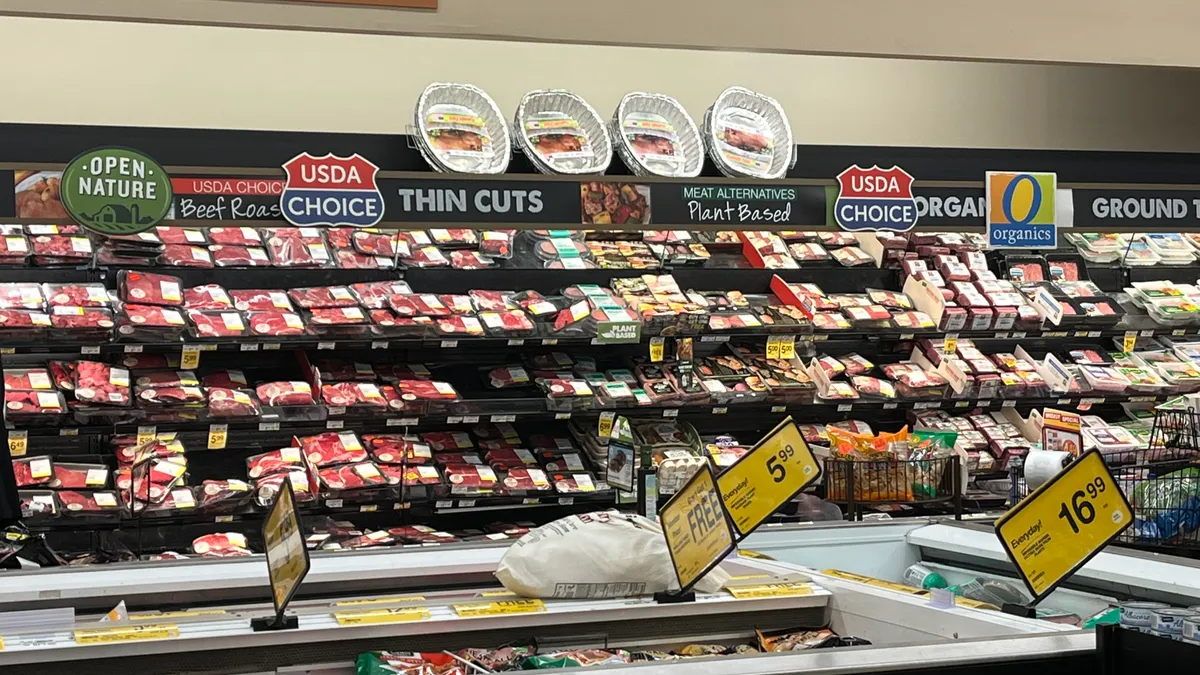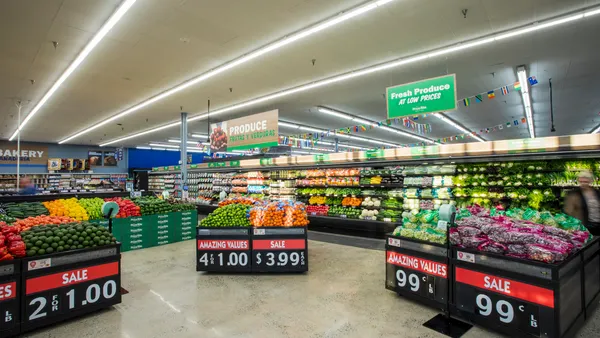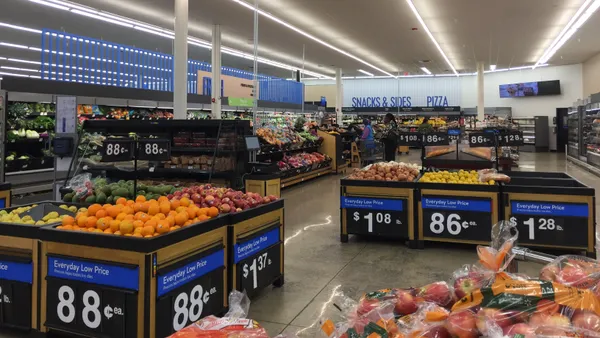Dive Brief:
- Meat department sales hit a record $81.8 billion in 2021, up 0.3% year-over-year, according to The Power of Meat report from the Food Industry Association (FMI).
- That growth was largely driven by inflation, with meat prices increasing 6.4% from 2020 and 14.5% from 2019, per IRI data cited in the report. Meat sales volume declined 5.6% between 2020 and 2021 as rising inflation altered shoppers’ behaviors.
- While supermarkets are still shoppers’ primary stores for both meat and groceries, club retailers and supercenters are continuing to grab market share, the report noted.
Dive Insight:
Supermarkets have long pointed to their meat departments as differentiators, FMI noted, but right now they’re grappling with inflation and other channels cutting into shoppers’ meat spending.
Traditional and limited-assortment stores, which make up 60.7% of meat dollar sales, saw sales decrease 4.6% year-over-year, to $55.1 billion, according to IRI data cited in the report.
Supercenters and clubs account for a smaller share of meat dollars, at 20.8% and 12.5%, respectively, but both had above-average increases in meat dollar sales in 2021 compared to 2020, with supercenters up 5.3% to $18.9 billion and clubs up 1.4% to $11.3 billion.
Supercenters and clubs have seen more shoppers steadily turn to them as their primary store for meat purchases. In 2021, 30% and 9%, respectively, of shoppers named supercenters and clubs as their primary outlet for meat, up from 22% and 7%, respectively, in 2018.
Meanwhile, traditional supermarkets dropped from 57% of consumers in 2018 seeing that channel as their top choice to 50% in 2021 and then to 48% in 2022.
Inflation has prompted an uptick in channel switching when it comes to meat buying. In December, 15% of consumers surveyed said they were buying meat and grocery products in separate channels, with club stores and supercenters being notable beneficiaries.
The good news for supermarkets, though, is that they are still seen as a destination for meat shoppers. Supermarkets recorded less channel loss (10%) among meat buyers in 2022 than limited-assortment stores (26%), supercenters (19%) and clubs (15%), the report noted.
“Supermarkets also tend to benefit from channel switching as the primary destination for those who purchase meat/poultry in a different store than the rest of their groceries, at 50%,” FMI said.
On the inflation front, FMI said consumers have always responded to meat inflation, but rising prices coupled with pandemic behaviors are making shoppers place more emphasis on only getting what they need.
Inflation has spurred more than two-thirds of shoppers to recreate restaurant meals at home, driving premiumization. Other shopping changes have included getting meat and poultry that’s on sale (41%), only buying what they need (39%) and buying smaller amounts (26%).















